How climate change worsens heatwaves, droughts, wildfires and floods
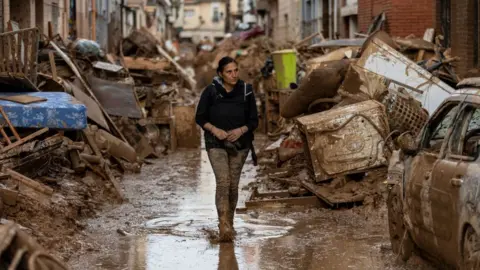 Getty Images
Getty ImagesParts of Spain have again been hit by torrential rain, just two weeks after the flooding that killed more than 220 people.
Like other extreme weather events, episodes of heavy rainfall are becoming more common and more intense in many places around the world, driven by climate change.
Here are four ways that rising temperatures are affecting weather extremes.
1. More extreme rain
For every 1C rise in average temperature, the atmosphere can hold up to around 7% more moisture.
With more moisture available, rainfall can become heavier.

Scientists use computer models to simulate how individual extreme weather events unfold in two scenarios:
- today's world with around 1.2C of human-caused warming
- a hypothetical world without human influence on the climate.
That way, they can estimate how much a particular storm, heatwave or drought was affected by climate change.
Between October 2023 and March 2024, the UK experienced the second-wettest such period on record.
This level of rainfall was made at least four times as likely by human-caused warming, according to scientists at the World Weather Attribution group (WWA).
In September 2024, deadly floods hit much of central Europe, including Poland, the Czech Republic, Romania, Austria and Italy.
The intensity of the rainfall over four days in mid-September was made twice as likely by climate change, the WWA says.
Climate change is also likely to have played a part in the heavy rainfall seen in Spain in late October and early November.
Scientists point to the influence of rising temperatures, although a full study is needed to evaluate exactly how much of an influence climate change had compared with naturally fluctuating weather patterns.
Globally, heavy rainfall events have become more frequent and intense over most land regions due to human activity, according to the UN's climate body, the IPCC.
It says this pattern will continue with further warming.
2. Hotter, longer heatwaves
Even a small increase in average temperatures makes a big difference to heat extremes.
As the range of daily temperatures shifts to warmer levels, hotter days become more likely and more intense.

In April 2024, temperatures in Mali rose above 48C during an extreme heatwave across the Sahel region of Africa which was linked to increased hospitalisations and deaths.
This level of heat would not have been possible without human-caused climate change, according to the WWA.
Such temperature spikes will become more common in many places as the world continues to warm.
In the UK, temperatures topped 40C for the first time on record in July 2022, causing extensive disruption. This would have been extremely unlikely without climate change, the WWA said.
Heatwaves can happen as a result of heat domes, which are created when an area of high pressure stays over the same area for days or weeks, trapping hot air underneath.
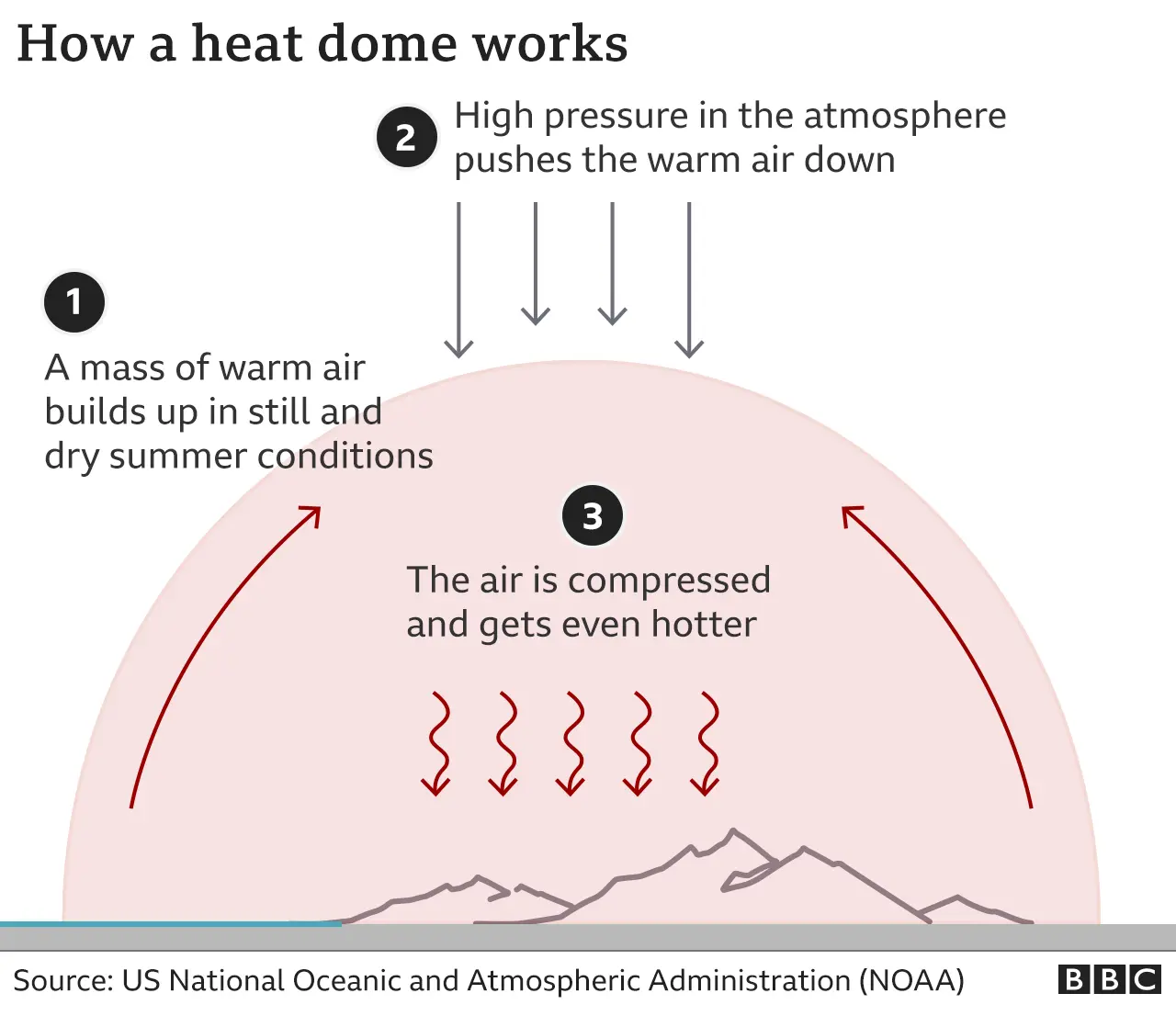
One theory suggests that higher temperatures in the Arctic - which has warmed nearly four times faster than the global average - are affecting the fast band of winds high in the atmosphere known as the jet stream, which could be making heat domes more likely.
3. Longer droughts
Linking climate change with specific individual droughts can be difficult, because there are lots of different factors that affect the availability of water.
Natural weather systems, for example, can play a key role, as was the case with drought in southern Africa in early 2024.
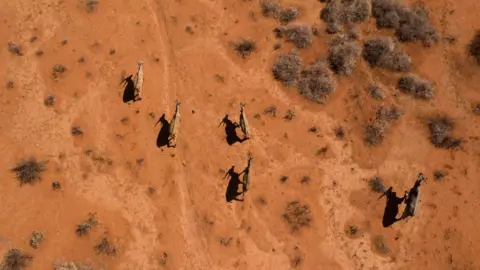 Getty Images
Getty ImagesBut climate change is shifting global rainfall patterns. While some of the world is getting wetter, other parts are becoming drier, which can make them more prone to drought.
And heatwaves fuelled by climate change can worsen dry conditions when they do occur, by increasing evaporation from the soil. This makes the air above warm up more quickly, leading to more intense heat.
During periods of hot weather, increased demand for water, especially from farmers, puts even more stress on the water supply.
In parts of East Africa, there were five failed rainy seasons in a row between 2020 and 2022, as the region suffered its worst drought for 40 years. This displaced 1.2 million people in Somalia alone.
Climate change has made droughts like this at least 100 times more likely, according to the WWA.
Human-caused warming was also the main driver of drought in the Amazon rainforest in the second half of 2023. This was the region's worst drought since modern records began.
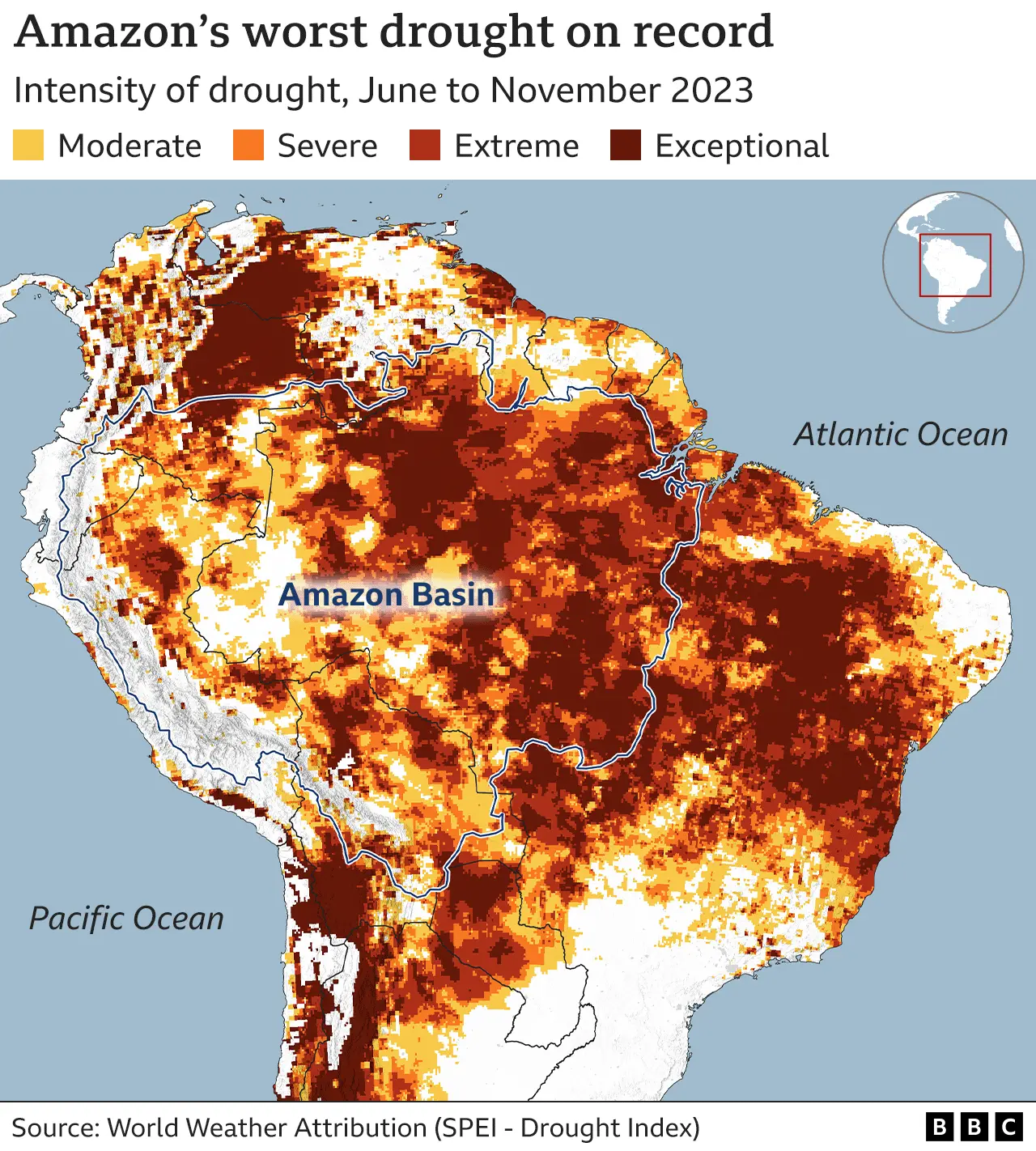
4. More fuel for wildfires
Fires happen naturally in many parts of the world. It is difficult to know if climate change has caused or worsened a specific wildfire because other factors are also relevant, such as changes to the way land is used.
But climate change is making the weather conditions needed for wildfires to spread more likely, the IPCC says.
Extreme, long-lasting heat draws more moisture out of soils and vegetation.
These tinder-dry conditions provide fuel for fires, which can spread at an incredible speed, particularly if winds are strong.
Canada experienced by far its its worst wildfire season on record in 2023.
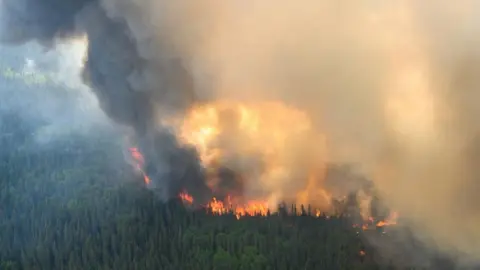 Reuters
ReutersClimate change more than doubled the likelihood of the extreme "fire weather" conditions in eastern Canada in May and June 2023, which helped fires to spread, the WWA says.
Rising temperatures may also increase the likelihood of lightning in the world's northernmost forests, which can in turn trigger more fires.
The combined effects of shifting land use and climate change mean extreme wildfires are projected to become more frequent and intense globally, according to the UN Environment Programme (UNEP).
The number of the most extreme fires may rise by up to 50% by 2100, UNEP suggests.
